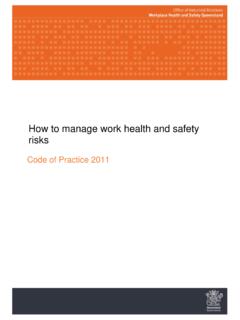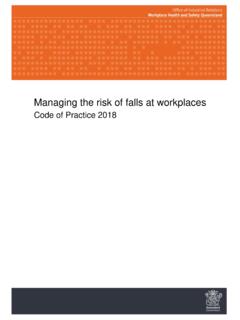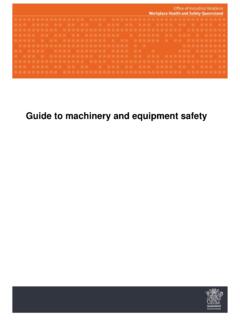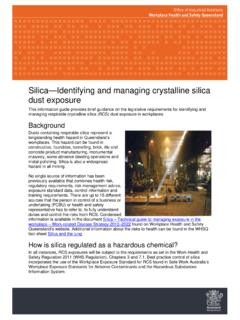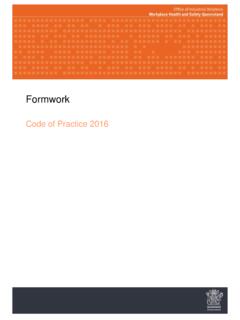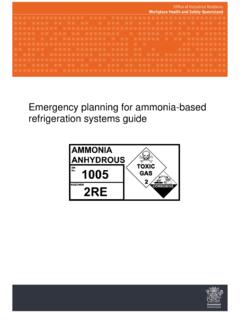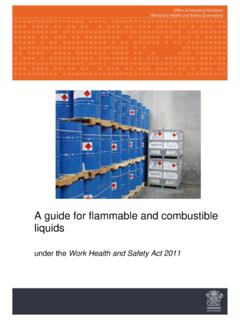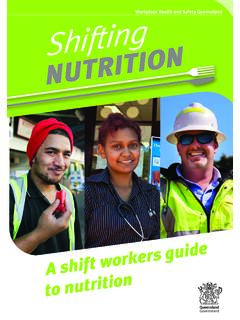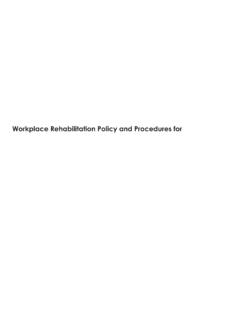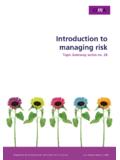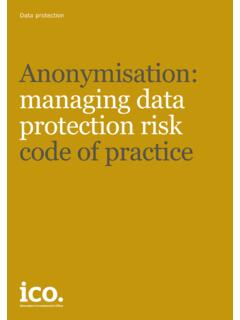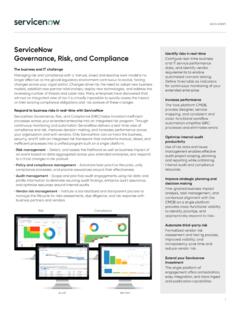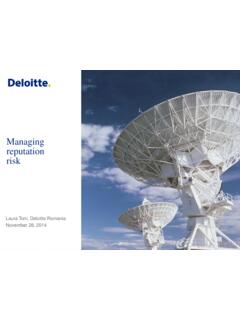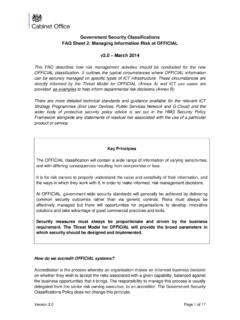Transcription of Preventing and managing fatigue-related risk in the workplace
1 workplace Health and Safety Queensland Preventing and managing fatigue-related risk in the workplace The State of Queensland 2020. Copyright protects this document. The State of Queensland has no objection to this material being reproduced but asserts its right to be recognised as author of the original material and the right to have the material unaltered. Disclaimer The information presented in this handbook is intended for general use only. It should not be viewed as a definitive guide to the law and should be read in conjunction with Queensland WHS legislation.
2 If you are uncertain about the advice in this guide please contact Acknowledgements We acknowledge and thank the following researchers and authors for your support in adopting or adapting content for use within this handbook. McCulloch, K., Baker, A., Ferguson, S., Fletcher, A. & Dawson, D. (2007a). Fatigue Risk Management System for the Canadian Aviation Industry Policies and Procedures Development Handbook. Retrieved February 16, 2014, from: Australian Pipeline and Gas Association (2018). Fatigue Risk Management Guidelines A guide to proactively managing fatigue in the Australian Pipeline and Gas industry.
3 Document history First published in July 2020. AEU20/6231. Preventing and managing fatigue-related risk in the workplace 2. Contents 1. 2. What is fatigue?..4. 3. What causes fatigue?..5. 4. What are the consequences associated with fatigue?..5. 5. workplace fatigue and the 6. 7. 8. Risk 9. Hazard identification in the context of workplace 10. Risk 12. 11. Risk 13. 12. Reviewing control 14. 13. 14. 14. Monitoring and 15. 15. Incident investigation and 16. 16. Information, instruction and 16. 17. Other 17. 18. Further 18. Tool 1. Fatigue factors 19.
4 Tool 2. Organisational self-assessment Tool 3. Sample worker consultation Tool 4. Individual fatigue risk assessment and workplace safety 41. Tool 5. fatigue-related investigation Preventing and managing fatigue-related risk in the workplace 3. 1. Introduction The prevention and management of fatigue-related risk in the workplace is a work health and safety (WHS) issue that requires a multi-faceted organisational approach. Employers have a primary duty of care to identify and control (eliminate and minimise) fatigue-related risks .
5 This handbook aims to help employers understand their duties under the Work Health and Safety Act 2011 (WHS Act). It provides guidance on how to: identify hazards and risks related to fatigue consult and communicate with workers eliminate and minimise risks respond to and learn from incidents involving fatigue to improve prevention efforts. The handbook has been designed as a resource for managers, supervisors, health and safety representatives (HSRs) and others involved in developing strategies to control fatigue-related risk in the workplace .
6 It should be read in conjunction with the resources listed in sections 16 and 17. 2. What is fatigue? Fatigue is more than feeling tired and drowsy. In a work context, fatigue is a state of mental or physical exhaustion which reduces a person's ability to perform work safely and effectively. Fatigue is a condition that can result from excessive work, inadequate or disturbed sleep, physical exertion, mental exertion, or prolonged waking times. Fatigue can be, in some cases, a natural response to the mental and physical effort of everything we do.
7 Adequate sleep is essential for reducing fatigue and promoting recovery. Signs and symptoms of fatigue can typically be grouped into three categories, physical, cognitive and emotional. It is important to note however that these signs and symptoms may be due to causes other than fatigue. Furthermore, some individuals may experience different symptoms of fatigue than others. Table 1. fatigue-related signs and symptoms Physical Cognitive Emotional Yawning Difficulty concentrating on tasks More quiet than usual Increased blink rate Lapses in attention Withdrawn Heavy eyelids Difficulty remembering Reduced motivation Blurred vision F ailure to communicate important Lacking energy Head drooping information Decreased tolerance Slower reaction time Risk taking behaviour Mood disturbances Impaired hand eye coordination Disorganisation Emotional outbursts Headache Lack of situational awareness Irritability Muscle
8 Aches and cramps ccidently doing the wrong thing A. (error). ccidently not doing the planned A. thing (omission). Preventing and managing fatigue-related risk in the workplace 4. 3. What causes fatigue? There are many factors that have the potential to increase the risk of fatigue. These are categorised as work-related and personal factors (Table 2). Table 2. Factors contributing to fatigue Work-related Personal Cumulative hours worked Medical conditions Task demands (workload, time pressure) Sleep disorders Hazardous manual tasks Diet Predictability of roster Alcohol and drugs Type of work (physical/cognitive/emotional)
9 Age Accommodation Sleep quality and quantity Time of day of work Time of day that sleep occurs Commuting Family and social life Recovery periods between shifts General health Roster cycle length Exercise Shift length Lifestyle choices Payment incentives Environmental factors affecting sleep (noise, heat, Environmental stressors at work ( light, noise, light). climate, vibration) Secondary employment and voluntary work Organisational culture 4. What are the consequences associated with fatigue? Whilst a certain level of fatigue can be a normal response to everyday living, moderate to high levels of fatigue can have a range of undesirable outcomes for the individual, workplace and community (Table 3).
10 Table 3. Consequences of fatigue Individual workplace Community Poorer physical and psychological Increased fatigue-related error Increased potential for incidents health and incidents to occur in the community ( Impacts to cognitive functioning Increased mortality rates road crashes). Impacts to short-term memory Increased costs associated with Increased need for trauma function incident management counselling services Increased likelihood of social Increased levels of absenteeism Increased use of medical facilities alienation and lost time and allied health services Increased instances of Increased levels of presenteeism Broader ripple effects of serious relationship problems ( coming to work despite injury, disability and death in the injury, illness or other.)
